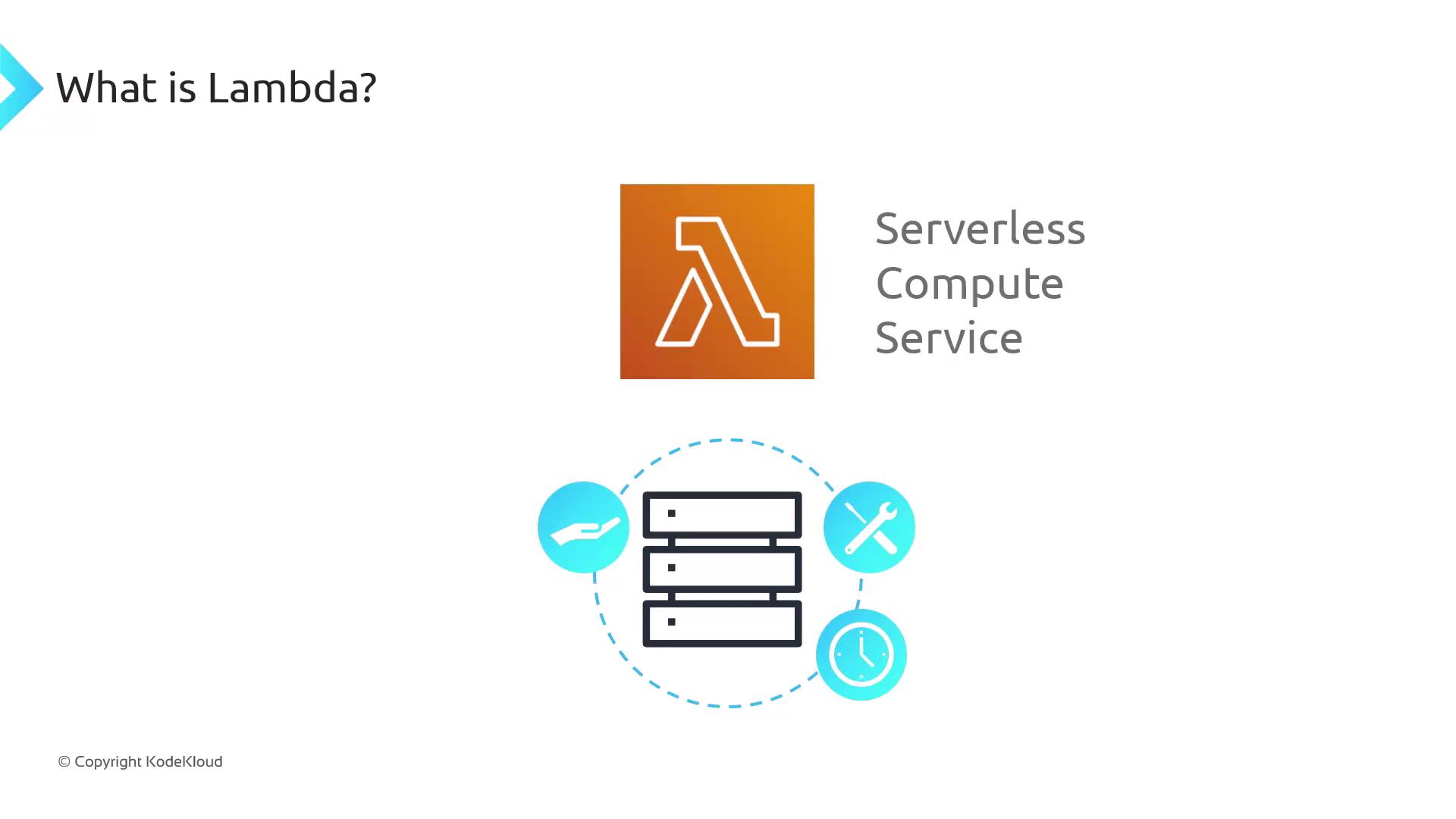Certified Jenkins Engineer
AWS Lambda and Advanced Deployment Techniques
AWS Lambda Basics
In this lesson, you’ll learn how AWS Lambda empowers you to run code without provisioning or managing servers. Ideal for event-driven architectures, Lambda automatically scales your functions and charges you only for actual compute time.
What Is AWS Lambda?
Imagine a clever inventor who wrote a program to spark fire by rubbing sticks together. In the old world, he’d wait days for a server to be built, provisioned, and maintained—delaying his warmth and dinner. AWS Lambda changes that:
- You simply upload your code as a “Lambda function.”
- Lambda takes care of the infrastructure, scaling from zero to thousands of concurrent executions.
- You pay only for the milliseconds your code runs.
Note
AWS Lambda is a Functions-as-a-Service (FaaS) offering. It abstracts away servers, operating systems, and scaling concerns so you can focus entirely on your application logic.

Key Benefits of AWS Lambda
| Feature | Description |
|---|---|
| Serverless Management | No servers to provision, patch, or maintain |
| Automatic Scaling | Instantly scales based on incoming requests |
| Pay-per-Use Pricing | Billed in 100 ms increments for only the compute time you consume |
| Built-in High Availability | Fault-tolerant across multiple Availability Zones |
| Integrated Security | IAM-based permissions and VPC integrations out of the box |
Supported Languages and Runtimes
AWS Lambda natively supports these runtimes:
| Runtime | Common Use Cases |
|---|---|
| Node.js (12.x, 14.x, 16.x) | APIs, microservices |
| Python (3.7, 3.8, 3.9) | Data processing, machine learning |
| Java (8, 11) | Enterprise applications |
| C# (.NET Core 3.1, .NET 5) | Windows workflows, back-end services |
| Go (1.x) | High-performance microservices |
| Ruby (2.7) | Web applications |
| PowerShell (6.x) | Automation and scripting |
If you need a different language or version, use the Lambda Runtime API to bring your own runtime. AWS even demonstrates running legacy COBOL applications on Lambda via custom runtimes.
![]()
Warning
Lambda functions can experience cold starts, especially in VPCs or when using large deployment packages. Design for stateless, short-duration handlers to minimize latency.
About This Course
In this hands-on module, we will:
- Create and configure a Node.js Lambda function.
- Set up a Jenkins pipeline to deploy and invoke the Lambda.
- Monitor performance using CloudWatch logs and metrics.
If you’d like to deepen your Lambda expertise, check out Matthew’s AWS Lambda course on KodeKloud.
Further Reading
Thank you for learning AWS Lambda with us!
Watch Video
Watch video content